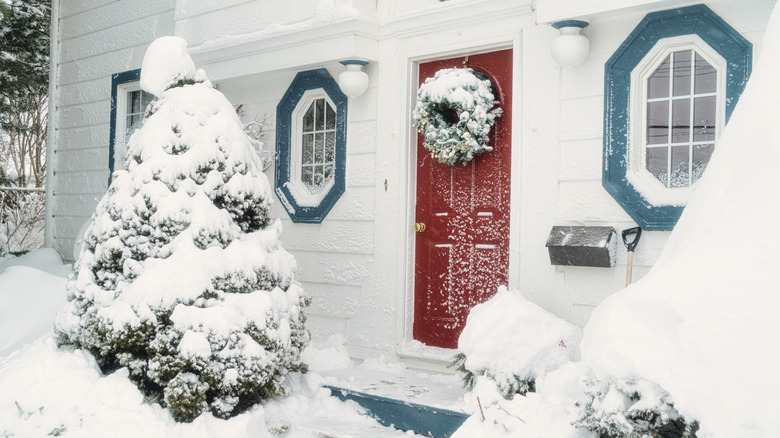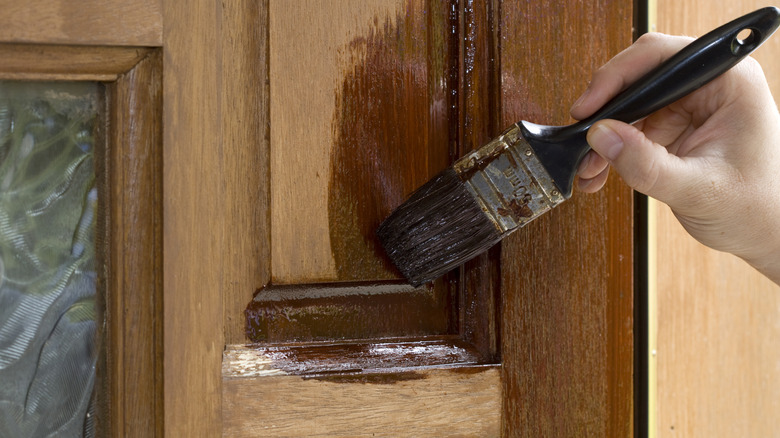How To Protect Your Wooden Doors From Snow Damage This Winter
Thanks to their timelessness, versatility, natural insulation properties, and aesthetic appeal, wooden front doors are the go-to choice for many homeowners. But for all its benefits, this popular front door material comes with one tricky downside: It's highly sensitive to harsh weather conditions. This drawback is especially significant if you live in an area that sees a lot of snow. With prolonged snow exposure, your wooden door can start rotting, warping, and even experiencing structural damage due to the moisture that gets trapped inside as the snow melts. Luckily, you can avert this unfavorable scenario by treating the wood with a protective coat of sealant or paint before winter comes around.
If winter weather is giving your doors a hard time, this could also escalate into a safety issue. As the cold weather causes the wood to expand, your door could become misaligned and stay stuck, trapping you inside or out. It's better to be safe than sorry, and a little care goes a long way to ensure your front door stays intact for years to come.
Seal your wooden doors to protect them from snow
What you need to know about waterproofing wood is that it's a process that requires a bit of preparation. First off, you have to choose whether you want to get the job done with sealant or paint. Both options will make your door weather-resistant, but paint will cover up the wood grain while sealant will highlight it. Once you've made your choice, lightly sand your door to prep it for treatment, and remove any old layers of paint and sealant. Then, apply your paint or sealant in uniform layers. Let each coat dry fully before going in with the next one to ensure a smooth finish.
For extra protection, it's also important to seal your door gaps in the winter. Installing weatherstripping helps close up the tight space between the door and frame, making sure water can't seep inside this way and wreak havoc on your door. When your wooden front door is fully snow-ready, all that's left to do is check for signs of moisture exposure every once in a while. This will help you make sure your prevention methods are working as intended so you can enjoy the snowy months worry-free.

